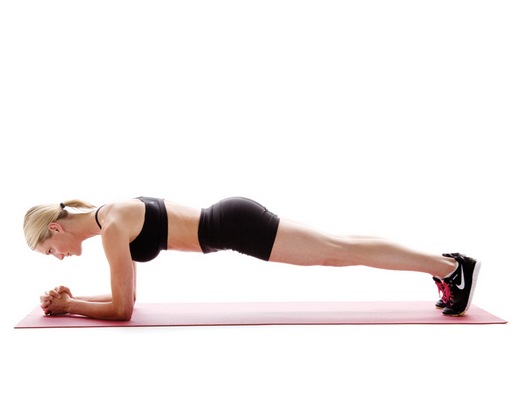 It’s always complex algorithm to work out your workouts when you come down with a flu or a cold {or some other malady}. If it’s a 24-hour stomach bug, it’s pretty much a no brainer. But a mild cold, with a little lingering congestion, or a flu that turns into an ongoing cough – these can create some tough decisions for us.
It’s always complex algorithm to work out your workouts when you come down with a flu or a cold {or some other malady}. If it’s a 24-hour stomach bug, it’s pretty much a no brainer. But a mild cold, with a little lingering congestion, or a flu that turns into an ongoing cough – these can create some tough decisions for us.
Sometimes we can go weeks with no workout trying to take it easy and get our healing time in. Sometimes we can be hard on ourselves – have all sorts of crazy conversations in our heads about being slackers. We can tell ourselves scary stories about never getting back to the routine. We can even convince ourselves that we’re quitters because we’re already now a few days or weeks behind.
Alternatively, we can blow off our body’s signals, slap it around a little, and tell it to RUCK UP! Often doing this too early in our healing process sends us right back to bed, or leaves us with symptoms that just won’t quit.
Two Perspectives on Exercise During Illness:
{one} I used to have a training instructor who for a long time told us to “work it out,” meaning sick or not, come to class, burn our fuel, and try to sweat the toxins out. For my body chemistry, this never seemed to work, and I’d often get a cold that lingered for weeks, turning to bronchitis, and me feeling helpless in connection with my body. The theory behind this tough love was the quantum idea of healing – as soon as we tap into that universal chi, our bodies ought to follow the wavelength and adjust to clear healthy energy.
{two} As an over-scheduled (I love everything I’m up to!), super busy, always working, somewhat yin deficient woman – the key to my quantum fusion has always been rest. When I lay low and take a few days off with the arrival of a cold, it is usually gone with no lingering affects after 3-4 days max. When I ignore the symptoms and try to do too much, I’m sniffling or coughing sometimes for a few weeks.
How this Plays Out:
This past week I entertained a mild virus, and had the usual symptoms of runny nose, a few sneezes, mild congestion, and general fatigue. I took the week off of working out, but not off work or socializing. Because I didn’t fully rest, my symptoms lingered for a few extra days this time. After a week of doing battle with my body {we know we are not supposed to battle our bodies, but sometimes we follow our instincts and realize that this is exactly what we’re up to}, I started to feel a bit irritable. Rather than hit a hard tae kwon do class or go for a big swim in the pool, I decided to do my own workout at home – a modified version of what I would normally do. I did fewer repetitions, more gentle stretches, and none of the cardio-specific stuff (ie, no running).
I woke up today feeling SO much better. Getting my energy moving really helped my body to rally it’s forces and push those toxins out. Having done enough to get my blood moving but not enough to tire my body was the perfect remedy this time around.
So how did I do it?
I honored my body. I listened to it, had conversations with it, and I was really honest with myself. I knew if I worked out too hard earlier on I might get body aches or a cough, and I felt that moment hit when I also new my body needed some time, attention and movement. I realized I had distanced myself from it during my cold, and that the hour I spent tending to my body was just the thing to I needed reconnect with it.
Here are a few basic guidelines for navigating your workouts when you’re not 100%:
1. Don’t work out with a fever or body aches – your body is already getting a workout fighting foreign invaders, and the fever and body aches are the signs of this
2. Don’t workout to your maximum within the first 3 days of getting sick
3. Don’t swim in cold water or cold air, or subject your body to cool wind or strong elements if you’re still heavily congested or experiencing anything other than mild symptoms
4. Try to avoid sweating too much before you’re fully healed – this could create more vulnerability and general fatigue causing a relapse
5. Avoid heavy aerobic exercise, cold or hot air, and any other exercise that triggers a cough tickle.
6. Lastly, remember any lingering condition is almost always due to the body not having enough energy to fully kick the virus, bacteria or whatever else you’re dealing with, or it can be due to emotional stress. It’s up to you to get really clear with yourself as to which of these two (if not both) is the case. It’s sometimes surprising to acknowledge that you are tired when you don’t necessarily feel like it. If it’s the fatigue and run-down-ness that’s primary, rest is truly going to be your best cure. If it’s the emotional component, some gentle stretching, a little walk outdoors, or something else that helps your energy shift without being too taxing might just be the thing you need to kick the sniffles out.
Did you enjoy reading this? If so, join my mailing list so you don’t miss a post! You can also like me on Facebook to get recipes, articles, and more!
